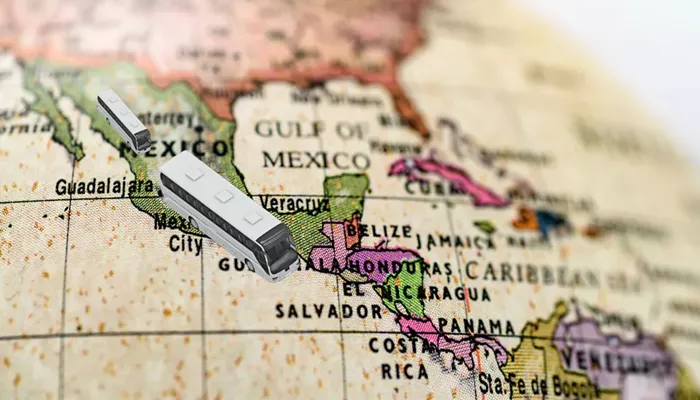Since the start of 2024, Mexico has significantly increased efforts to help the Biden-Harris Administration reduce illegal immigration at the southern U.S. border. Officials in Mexico have implemented a strategy called “El Carrusel,” which involves moving migrants away from the U.S. border to southern regions near Guatemala and Belize. This strategy appears to be effective, as encounters at the U.S.-Mexico border have dropped for six consecutive months, although they remain at crisis levels.
The “Carrusel” initiative gained momentum following a phone call between President Biden and Mexican President López Obrador in late December 2023. The two leaders recognized the urgent need for stronger enforcement, as illegal crossings had reached record numbers, sometimes exceeding 10,000 per day. Subsequently, a U.S. delegation, including Homeland Security Secretary Alejandro Mayorkas, met with López Obrador to discuss measures to reduce border crossings. Reports indicate that after these discussions, encounters at the southwest border decreased from over 300,000 monthly to below 200,000, reaching a low of 104,000 in August.
The Biden-Harris Administration has been vague about the agreements made with Mexico, and data sharing has been limited. However, it is increasingly evident that Mexico’s actions are primarily responsible for the decrease in encounters at the border. Since the December meeting, Mexico has implemented two significant policy changes: relocating migrants caught in its territory to the southern part of the country and tightening visa policies to make it more difficult for migrants to travel to the U.S.
El Carrusel Strategy
One key tactic Mexico is employing is transporting migrants to the country’s southern regions. Some news outlets suggest this approach is meant to discourage migrants from attempting to reach the U.S. border. The process involves Mexican authorities intercepting migrants, processing them, and then relocating them, which is documented as an “event” in their migration statistics. In 2024, relocations in the northern states along the U.S. border dropped by 37 percent, while those in the southern states surged by 30 percent. By July 2024, 87 percent of relocated migrants were sent to the southern states of Tabasco and Chiapas.
According to reports, Mexico has enhanced its operations by adding checkpoints and increasing searches of transportation methods. In the first half of 2024, the country recorded 712,226 migrant apprehensions, nearly three times the number from the same period the previous year.
This program to relocate migrants predates the December 2023 meeting and intensified after a March 2023 Supreme Court ruling that limited migrant detention to 36 hours, complicating deportation efforts. Instead of deporting migrants, authorities opted to drop them off in southern Mexico to deter them from heading north.
Changes in Visa Policy
Alongside relocating migrants, Mexico has adjusted its visa policies to further reduce border encounters. Many migrants arriving visa-free intended to use Mexico as a launchpad to the U.S. In October 2023, Mexico began requiring transit visas, leading to significant declines in encounters with Ecuadorians (down 76 percent) and Peruvians (down 88 percent) since spring 2024.
Financial Incentives for Return
Additionally, Mexico has initiated a program to financially support some migrants returning to their home countries. In March 2024, Mexico and Venezuela signed the “Vuelta a la Patria” agreement, which provides $110 per month for six months to Venezuelans who agree to return. Mexico is also considering similar agreements with Colombia and Ecuador.
Conclusion
Rather than addressing the border crisis, the Biden-Harris Administration has relied heavily on Mexico to manage the situation. The administration has pointed to minor policy changes and new pathways for migrants as reasons for the drop in encounters, but evidence suggests that Mexico’s initiatives are the real driving force behind these changes. However, this reliance poses risks, as Mexico could withdraw its support at any time or leverage concessions from the U.S. government.
If Mexico ceases its cooperation, a surge in illegal immigration could follow, exacerbating an already precarious situation. As more migrants accumulate in Mexico, the pressure on both the Mexican government and its citizens will grow. This trend is unsustainable, and the Biden-Harris Administration appears ill-prepared for the potential fallout.
Related topics:
- Sen. Marco Rubio: ‘Cats and Dogs Coverage Overshadows Real Impacts of Immigration’
- Foreign Minister Claims Giorgia Meloni’s Leadership Cut Illegal Immigration by 64%
- Visa Backlog Concerns Grow for 2026 World Cup and 2028 Olympics


